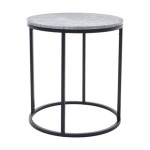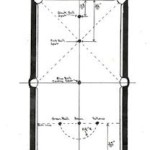What Garden Vegetables Grow Well in Partial Shade?
Many gardeners are fortunate enough to have sunny plots, but what about those who have areas that receive only partial shade? Fear not, as there are numerous vegetables that thrive in these conditions. Partial shade, defined as receiving between four and six hours of sunlight per day, can be a valuable asset in your garden, creating a haven for a diverse array of vegetables.
These vegetables are not only content with less direct sunlight, but they can also benefit from the cooling effects of partial shade, particularly in warmer climates. The dappled light and cooler temperatures help to prevent scorching, wilting, and bolting, encouraging healthy growth and abundant harvests. However, it's crucial to select the right vegetables for your partial shade garden, as some species require more sunlight for optimal growth.
Choosing the Right Vegetables for Partial Shade
When selecting vegetables for your partial shade garden, it is essential to choose those that tolerate or even thrive in these conditions. Some vegetables prefer a minimum of four hours of sunlight, while others can manage with as little as two hours. Here are some key considerations:
Leafy Greens: Leafy greens, such as lettuce, spinach, kale, and chard, are excellent choices for partial shade. These vegetables generally require at least four hours of sunlight but can tolerate even less, particularly in cooler climates. However, it is essential to ensure adequate airflow to prevent diseases.
Root Vegetables: Root vegetables, like carrots, beets, radishes, and turnips, typically prefer full sun, but they can still produce decent yields in partial shade, especially if the soil is consistently moist. However, root development may be slightly slower and less pronounced in shadier conditions.
Other Shade-Tolerant Vegetables: Several other vegetables can thrive in partial shade, including:
- Brassicas: Broccoli, cauliflower, and Brussels sprouts can perform well with four to six hours of sunlight.
- Peas: Peas are relatively shade tolerant and can even benefit from cooler temperatures in partial shade.
- Radishes: Radishes are quick-growing vegetables that are surprisingly tolerant of shade.
- Swiss Chard: Swiss chard is a leafy green that can tolerate a wide range of light conditions.
- Beans: Some bean varieties, such as bush beans and pole beans, can tolerate partial shade, but they may produce fewer beans than those grown in full sun.
- Kohlrabi: Kohlrabi is a cool-season vegetable that can thrive in partial shade, especially in warmer climates.
Maximize Growth in Partial Shade
While some vegetables are naturally shade-tolerant, there are several practical techniques to maximize growth in your partial shade garden:
Soil Preparation: Ensure your soil is fertile and well-drained to create an ideal environment for root growth. Adding compost or other organic matter can improve soil fertility and water retention.
Spacing: Space your plants adequately to ensure they have access to sufficient sunlight and air circulation. This helps prevent overcrowding and disease.
Watering: Proper watering is essential, especially in partial shade, as the soil dries more slowly. Water deeply and less frequently, allowing the soil to dry slightly between waterings.
Fertilization: Fertilize regularly, especially during the growing season, as shade can limit the availability of nutrients. Choose a balanced fertilizer suitable for vegetables.
The Benefits of Partial Shade
Growing vegetables in partial shade offers several advantages:
Protecting Your Plants from Harsh Conditions:
Partial shade provides welcome relief from the scorching sun, helping to prevent wilting, scorching, and bolting, particularly during summer months. It also helps to create a cooler microclimate, making it more comfortable for both your plants and you while gardening.
Extending the Growing Season:
Partial shade can extend the growing season, particularly for cool-season vegetables that can tolerate cooler temperatures. This allows you to plant and harvest these vegetables earlier in the spring and later in the fall, resulting in a longer harvest window.
Diverse Garden Ecosystem:
Partial shade can attract beneficial insects and pollinators to your garden, creating a more diverse ecosystem. This diversity can contribute to a healthier garden overall.
By understanding the benefits and challenges of growing vegetables in partial shade, you can create a vibrant and productive garden even in less sunny areas.

Vegetables To Grow In Shade Growing Tips And Garden Plans The Old Farmer S Almanac

30 Vegetables That Grow In Shade

Shade Tolerant Vegetables Vs Sun Friendly Veggies

Planning Your Garden Full Sun Partial And Shade

Vegetables You Can Grow In The Shade

Growing Veg In The Shade Garden World Discussions

Vegetables To Grow In Shade Growing Tips And Garden Plans The Old Farmer S Almanac

Shade Tolerant Vegetables Vs Sun Friendly Veggies

Vegetables To Grow In Shade Growing Tips And Garden Plans The Old Farmer S Almanac

17 Vegetables That Grow Well In The Shade








